IBM Model M Disassembly and Repair
by pew9000 in Circuits > Reuse
12146 Views, 7 Favorites, 0 Comments
IBM Model M Disassembly and Repair
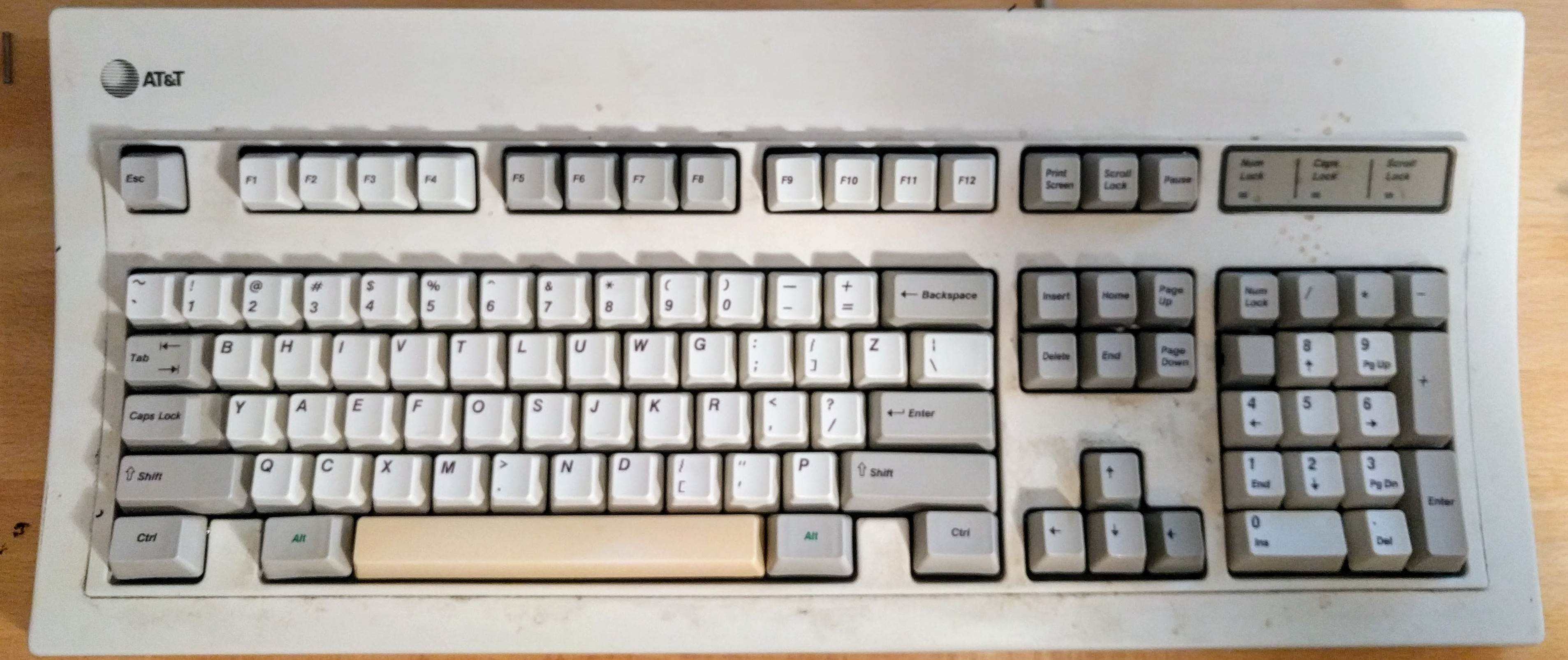
This keyboard has existed for over 20 years and is starting to wear out. In this tutorial, I will show the complete disassembly and repair process for this keyboard since the parts can wear out after a lot of use.
Note: This Instructable assumes you have some experience using a drill and are roughly familiar with how a keyboard works. Please read through the whole guide before starting to make sure you understand everything.
Required Materials
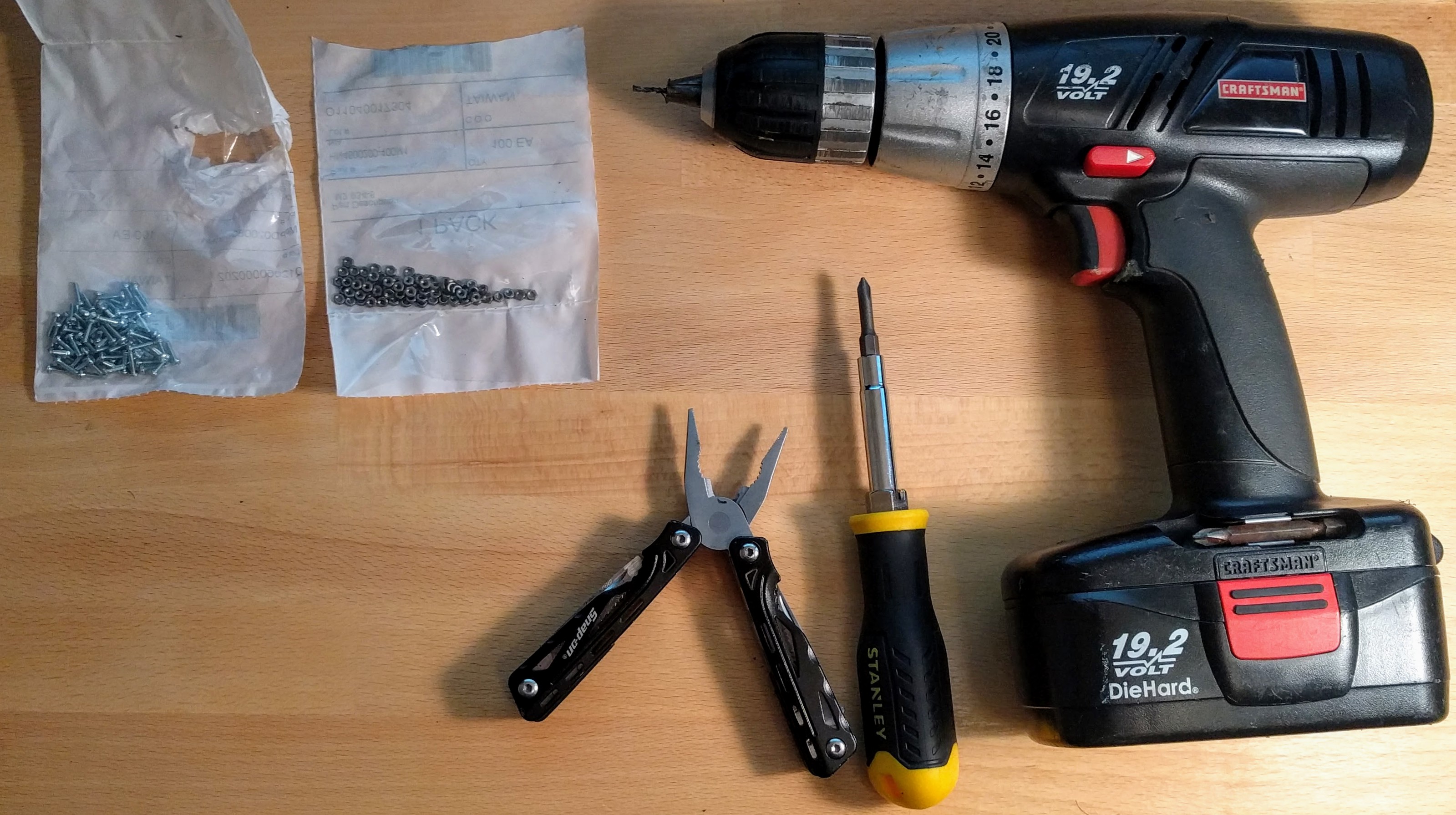
Aside from the keyboard, here are the required tools to repair your keyboard:
- 1 Phillips head Screwdriver
- 1/16” drill bit and drill Pliers
- 1 Knife (one you don’t mind messing up)
- 100 x M2 0.4 mm Screws
- 100 x M2 0.4 mm Nuts
- A working area, such as a desk or open space
Please purchase these parts since they are necessary to put the keyboard back together at the end.
Caution: There is a decent chance that doing this modification will break your keyboard more than it already is broken based on how well you use the tools. Unless you are OK with this, either buy a new keyboard or have a professional do the repair instead
Remove the Cable and Back Cover
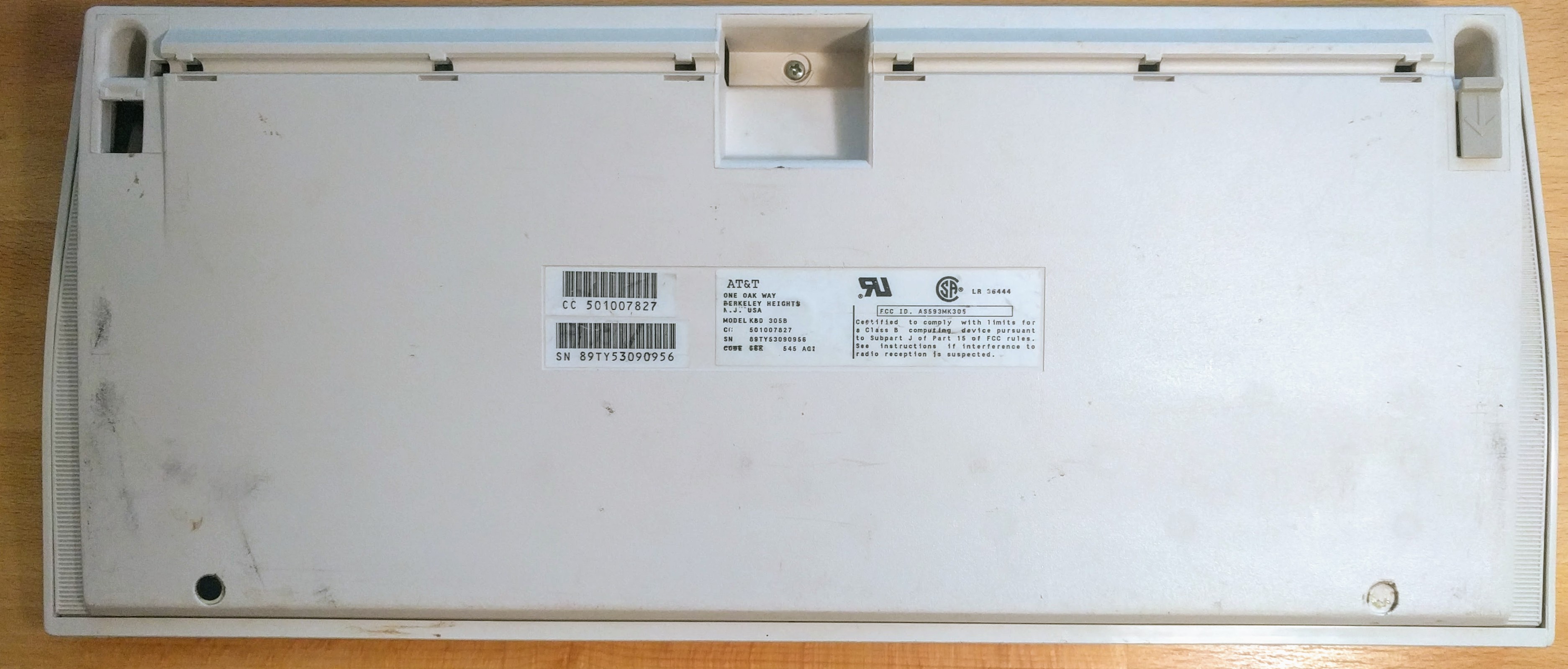
To start off, make sure the cable is disconnected from the keyboard so it doesn’t get in the way.
Place your keyboard facedown with the PS/2 cord unplugged and the 3 screws (as shown in image) facing up.
Once all 3 screws are removed, place them to the side in a place you’ll remember for later.
Now flip over the keyboard, being careful to hold the keyboard together, and pull the front half of the case up. Start from the top since the keyboard pivots on the bottom due to a hinge.
Remove the Keycaps and Connectors
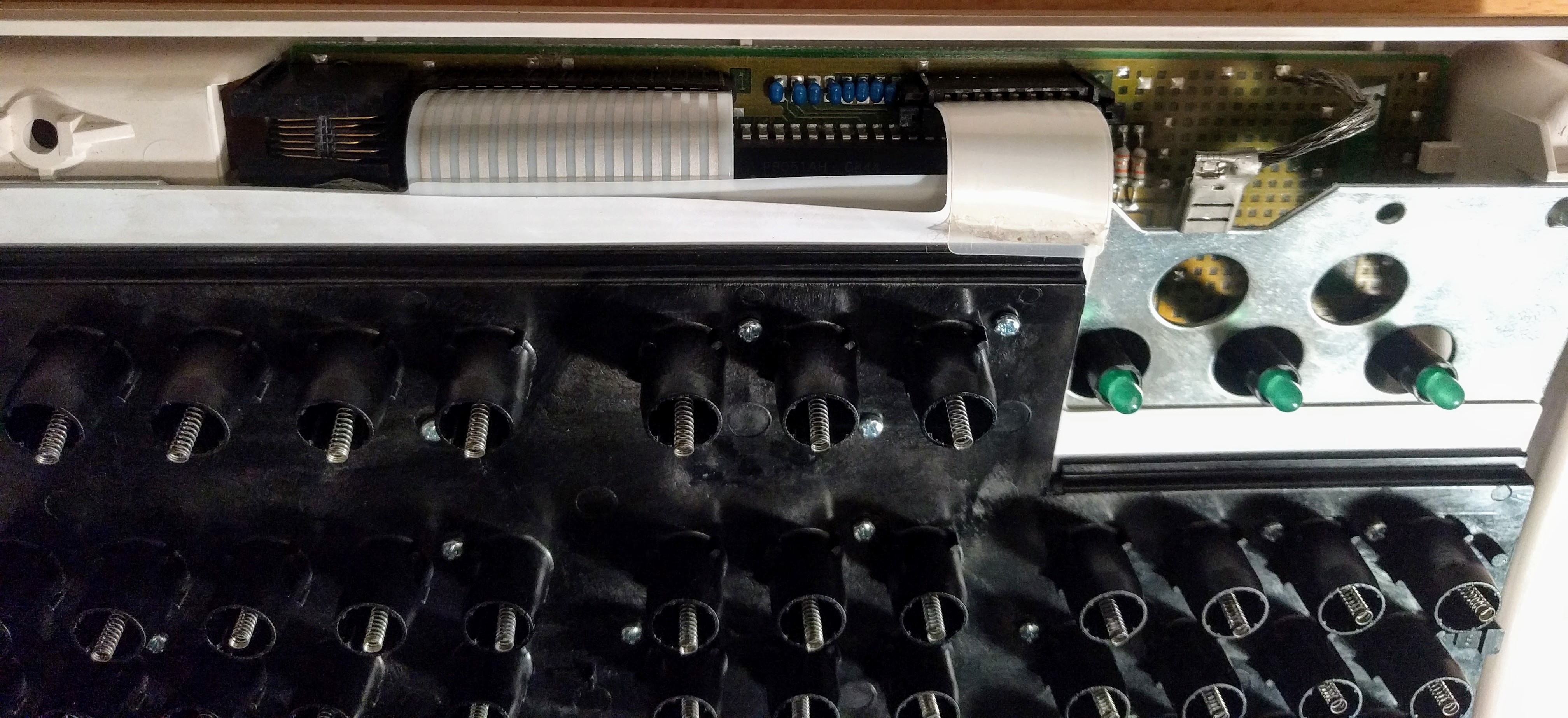
There are a few small tasks to do here.
- Remove all the keycaps from the keyframe (the black thing). This is as simple as grabbing under the key with your finger and pulling up.
- You will see some electronics in the upper right corner. Notice the 2 ribbon connectors, along with 2 metal clips. One of the metal clips is hidden under the left ribbon connector.
- Start with the right ribbon connectors by pulling up on 2 clips where the connector is plugged in. This releases the connector so you can then pull it out.
- Pull on the left ribbon connector widest connector (no clips on this one) until it comes all the way out. Now the only thing holding the keyboard still in is the metal clips.To pull the metal clips out, make sure you grab them by the end of the cable, then just pull on them.
Once all the connectors are free, lift up on the metal frame to pull the whole core out.
Note: By “core” I am referring to the black keyframe, the metal backing, and all the layers in between.
Removing the Plastic Rivets and Separating the Layers
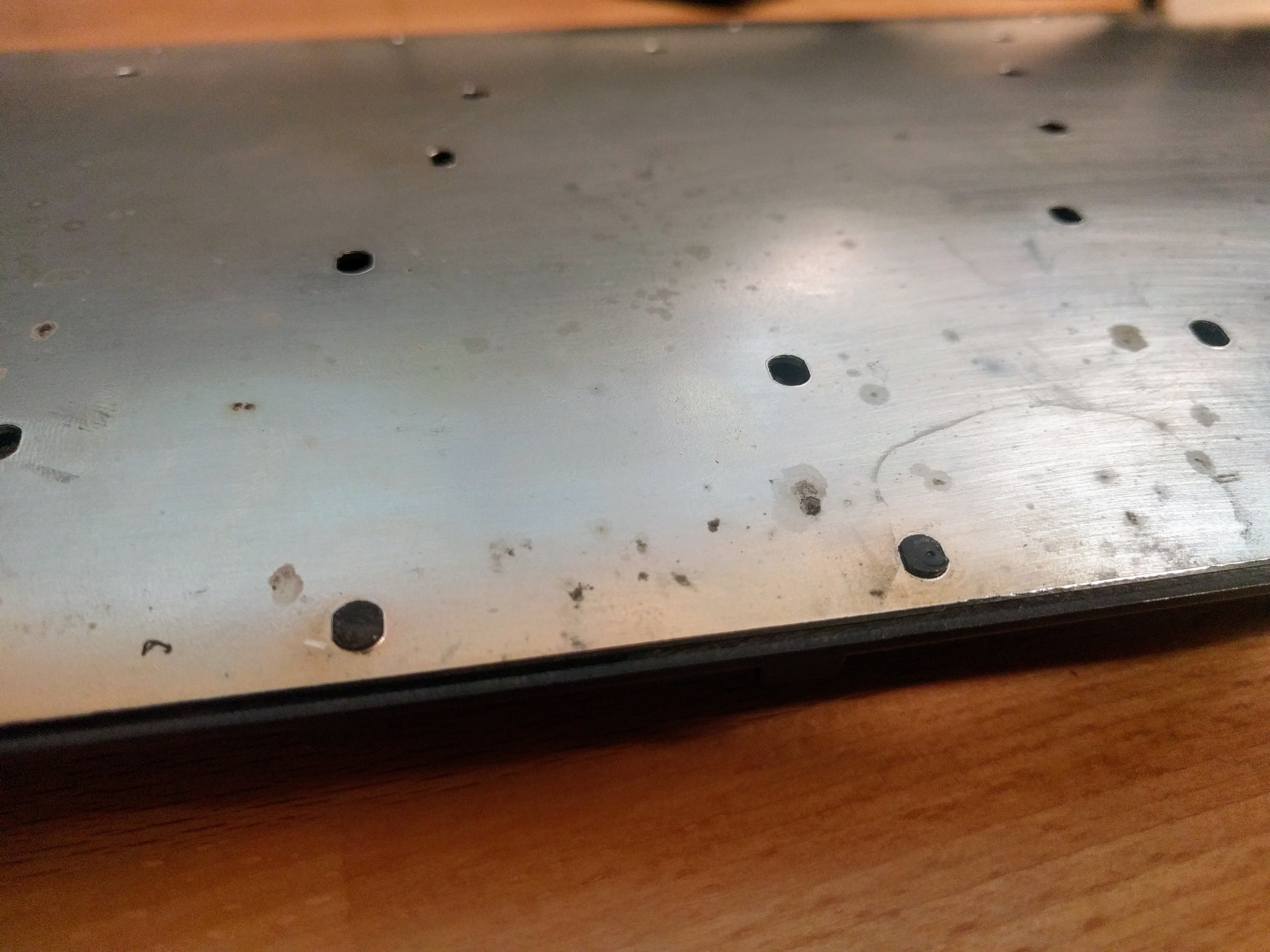
Now that the main keyboard core is out, flip it facedown. There are several small plastic rivets keeping the black keyframe connected to everything else.
Using the knife, scrape off the plastic rivets one by one. This allows us to separate the metal backing from everything else in the keyboard core.
Once all the plastic rivets have been removed, pull the metal backplate off.
Separate the Layers
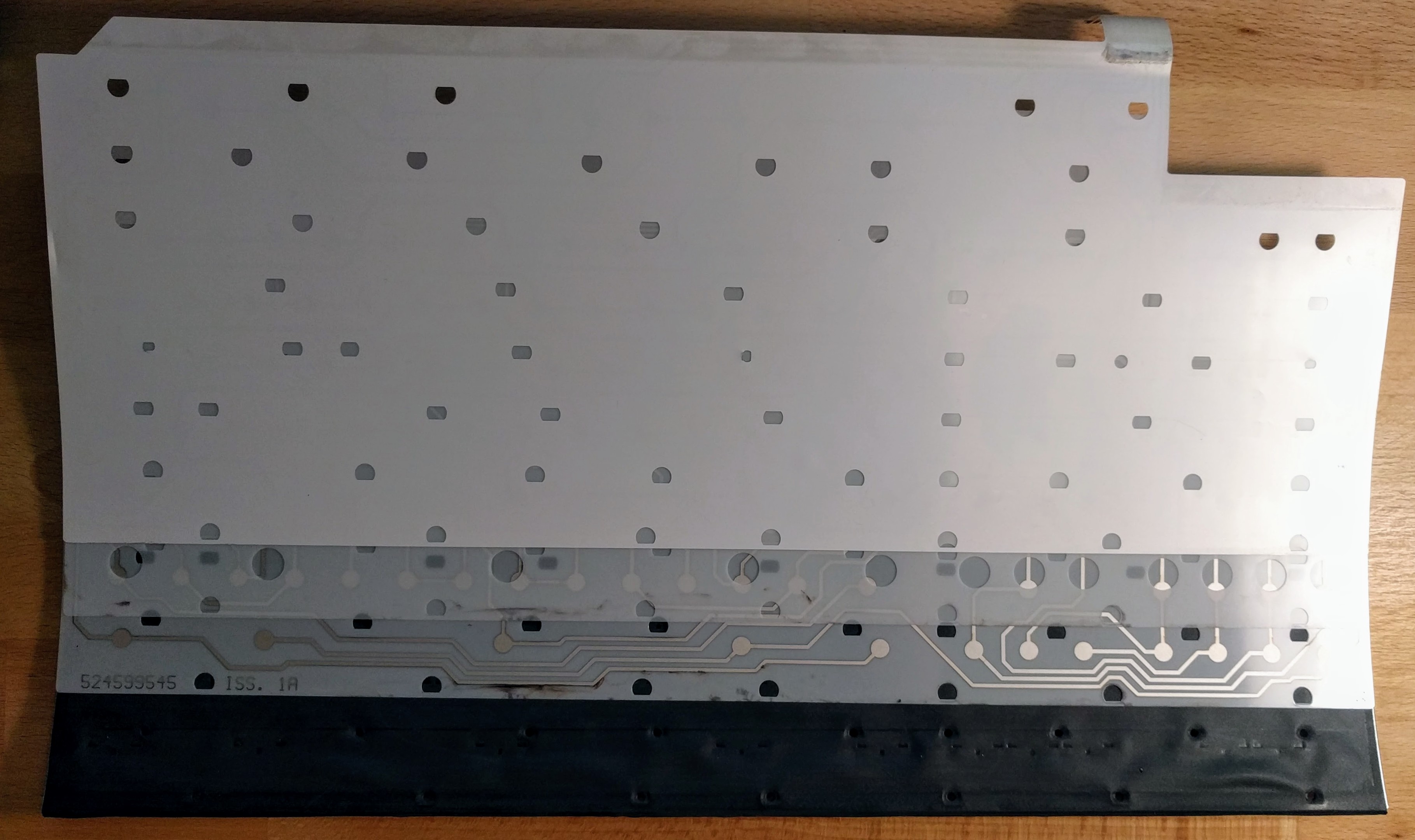
Now you will see the 2 membrane layers separated by a thin plastic sheet and soft plastic sheet.
From front to back, here are the layers of the keyboard core:
- Keyframe (the black thing)
- Top membrane (has small ribbon connector)
- Clear plastic sheet, bottom membrane (has wider ribbon connector)
- Black plastic sheet
- Metal backing.
Note: The key frame is not shown here so you can see the other layers better.
Set aside the 2 membrane layers and 2 plastic sheet layers for now; we will come back to them later during re-assembly.
Drilling Holes for the Bolts
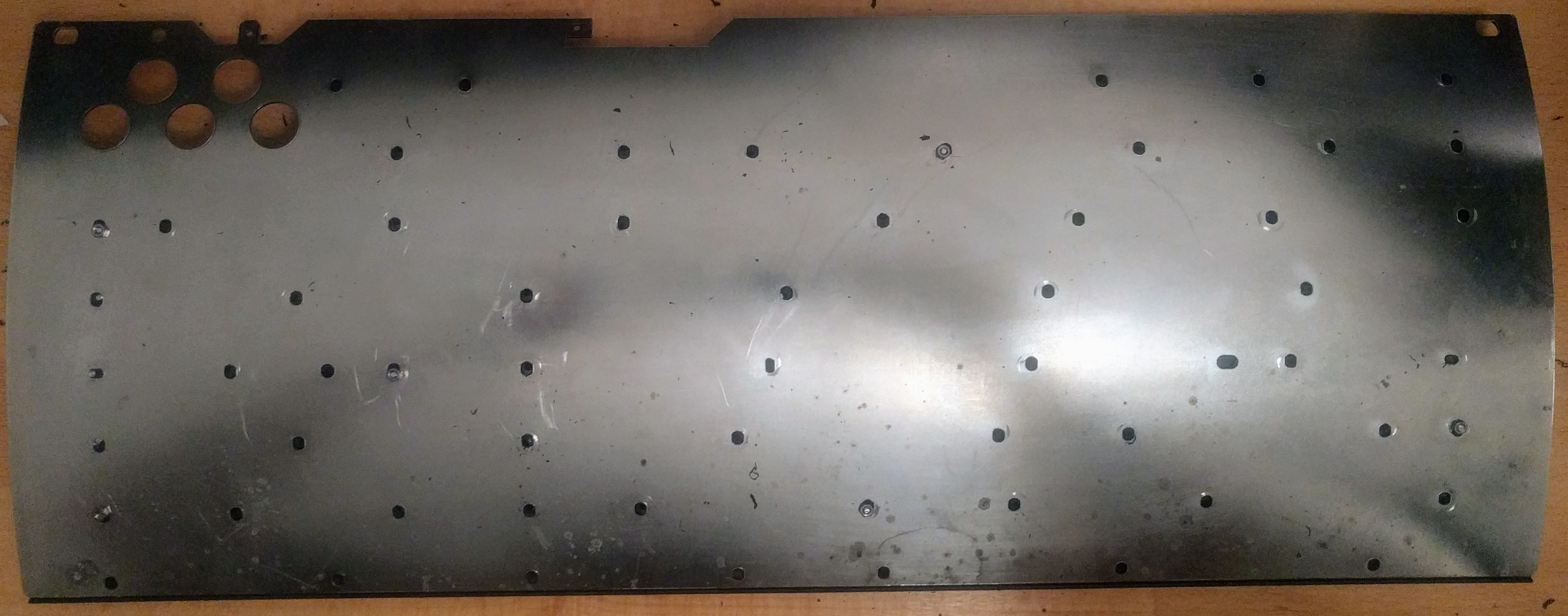
The only 2 layers you should be working with now are the black keyframe and the metal backplate. With both parts turn upside down, place the metal backplate onto the black keyframe. You may have to wiggle the pieces some until all of the holes that used to have rivets line up with the frame.
Now you need to drill out all of the plastic rivets, except the very bottom row:
- Start with drilling the corners holes and a few in the middle
- Put screws through those holes only, inserting them from the keyframe (top) side
- Screw on the nuts from the metal backing side (bottom, see image). Getting the first few screws in is a bit tricky. If you have someone to help push the layers together while you attach the first few screws it is very helpful.
-
Once you have the corners and a few middle screws in, drill out all the other rivets
-
After all the rivets are drilled out, remove the screws you put in in step 3 in preparation for re-assembly
Assemble the Keyboard Core
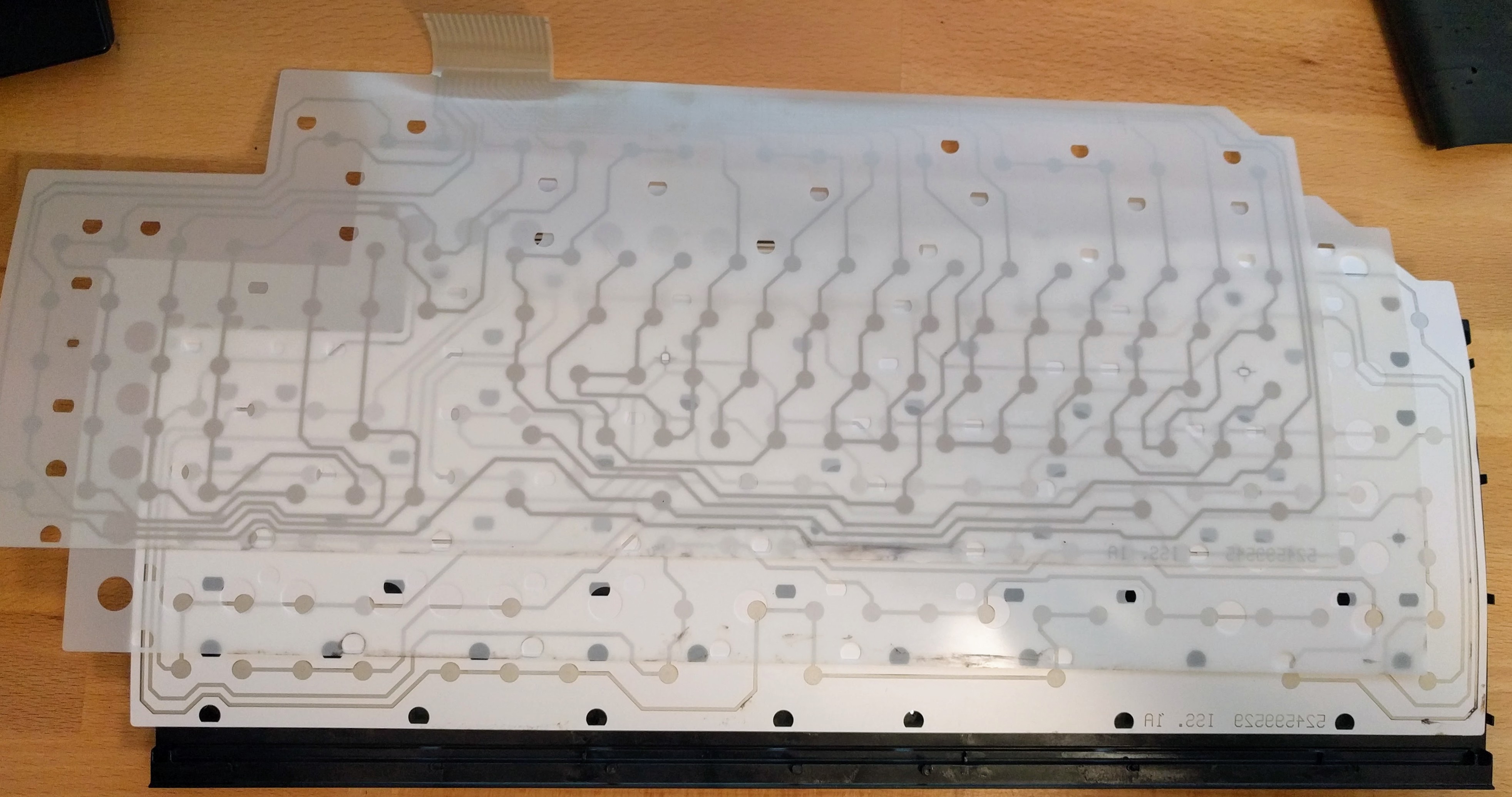
At this point, all the rivets in the keyframe should be drilled out, so it's time to put the keyboard core back together.
Assemble the core:
- Place the keyframe face down
- Place the membrane with the large ribbon connector so the circuits on it are face up on the keyframe
- Place the plastic sheet on the membrane in step 2
- Place the remaining membrane (with a small ribbon connector) so the circuits on it are face down on the keyframe
- Alight all the holes so that the holes you previously drilled are visible through all layers
- Place the metal backing face down on top of all the layers
- Again, make sure you can see the previously drilled holes through all layers
Screw the Keyboard Core Together
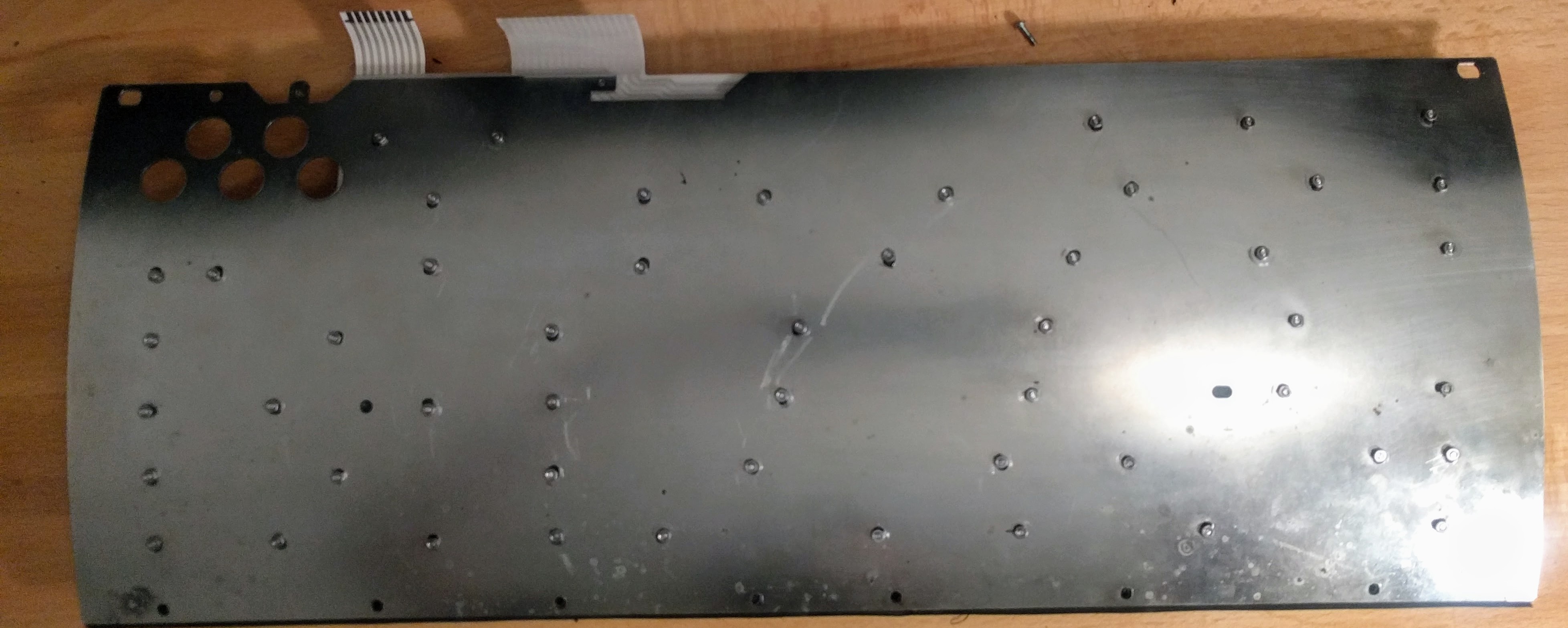
This step is very helpful if you have somebody to help you by holding the keyboard.
If you're doing this by yourself, secure the end you're not holding up by pushing it up against a heavy object to prevent the keyboard core from sliding when you lift up the end.
With the keyboard core still faced down, lift up one end of the keyboard just enough so you can insert a screw in from the bottom, and screw on the nut from above. Repeat this process for all screws.
Insert the Keyboard Back Into the Case
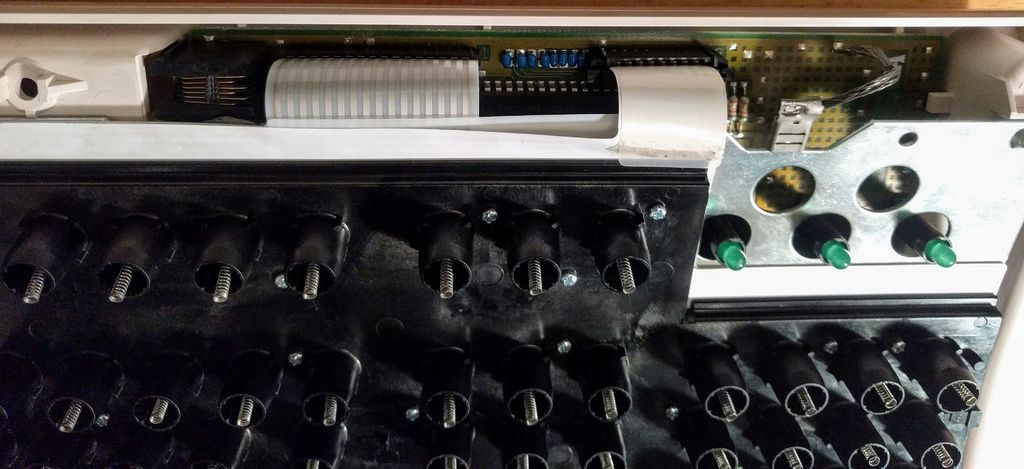
Similarly to how you removed the core, insert it back into the case:
- Insert the metal clip under the large ribbon connector first
- Insert the metal clip to the right of everything
- Insert the large ribbon connector
- Insert the small ribbon connector by pulling up on the tabs where the connector attaches to the circuit board, pushing the ribbon connector in, then pushing down on the tabs where the connector attaches to the circuit board.
Now put all the keycaps back on the keyframe
Attach the Front Cover and Cable
Attach the front cover by first attaching the bottom edge, the closing it. Flip over the keyboard and screw in the cover using the 3 screws you took out in step 2.
Plug in the cable you unplugged in step 2.
Everything should be working now!